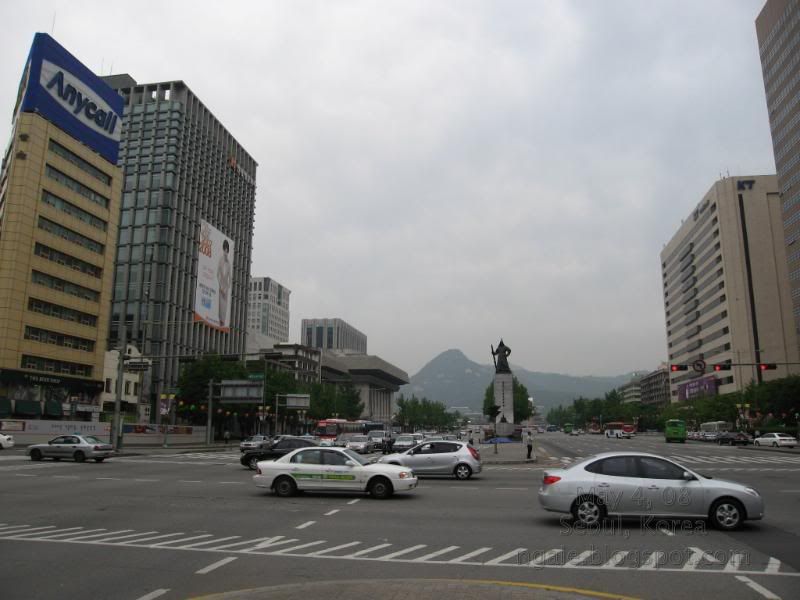
After looking at the tour brochures, we thought that it would be a good idea to buy the Seoul City Pass which is a one day transportation card that includes unlimited rides on the subway and unlimited rides on the tourist bus (City Bus) that stops at the various tourist attractions. After walking around, we found a tourist information kiosk only to be told that the pass is only sold at ONE location so we had to walk to that little kiosk that only sold the pass. It was ridiculous that the Korean National Tourism kiosk did not sell the passes.
Walking to find the City Pass kiosk.
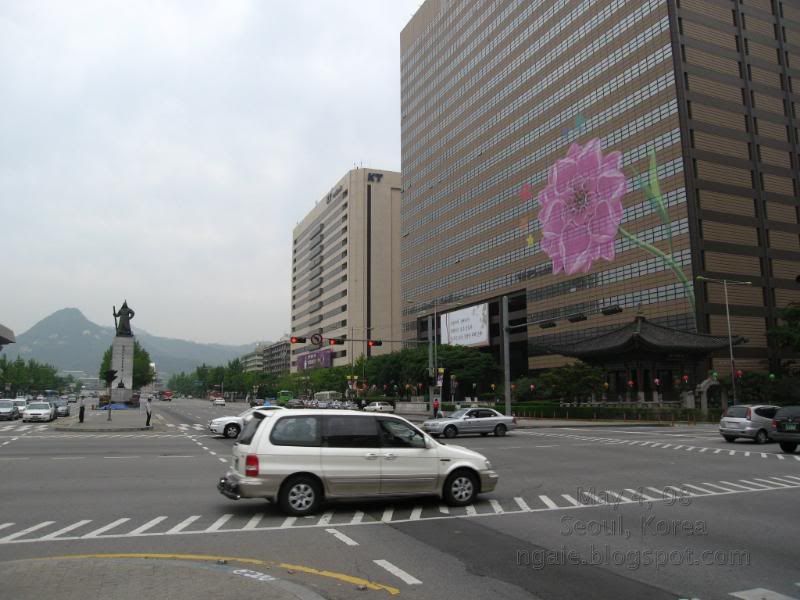


One card cost 15,000 won which was equivalent to $15. It was a big mistake as we later found out that because of a scheduled night parade starting at 6pm, the tourist buses would stop running at 3pm...
The next mistake we made was taking the wrong bus line as the Korean ticket seller just rushed us to get into one of the buses. So instead of going north towards the Gyeongbokgung Palace, we headed south. Trying to make the best of of this situation, we looked at the list of attractions included with the Seoul City Pass card and decided to go to Namsangol Traditional Folk Village.
Interestingly enough, this "tourist" attraction was free. We would later find out why it was free.
The always present N Seoul Tower in the background.
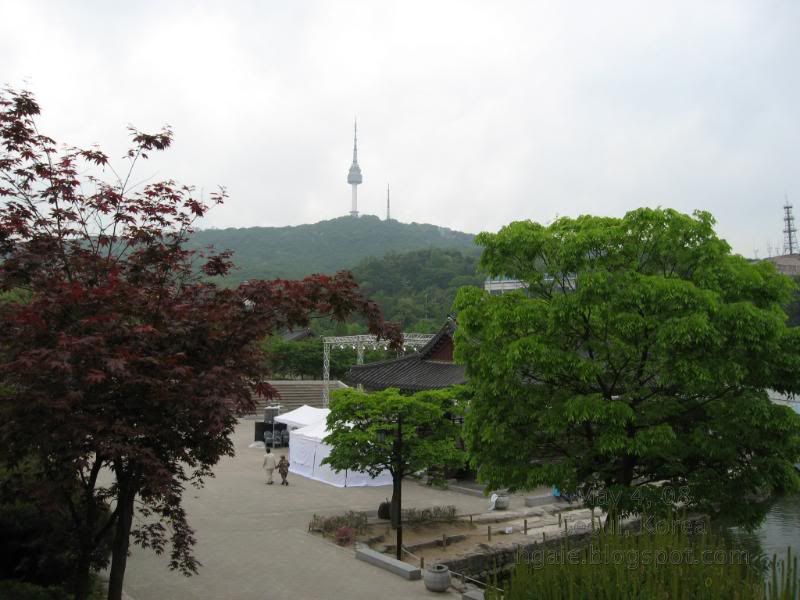
There was nothing much to see inside except a whole bunch of "restored traditional houses". When we walked past the front gate, we noticed a lot of tour buses. I would feel ripped off if I paid for a tour and they took me here.

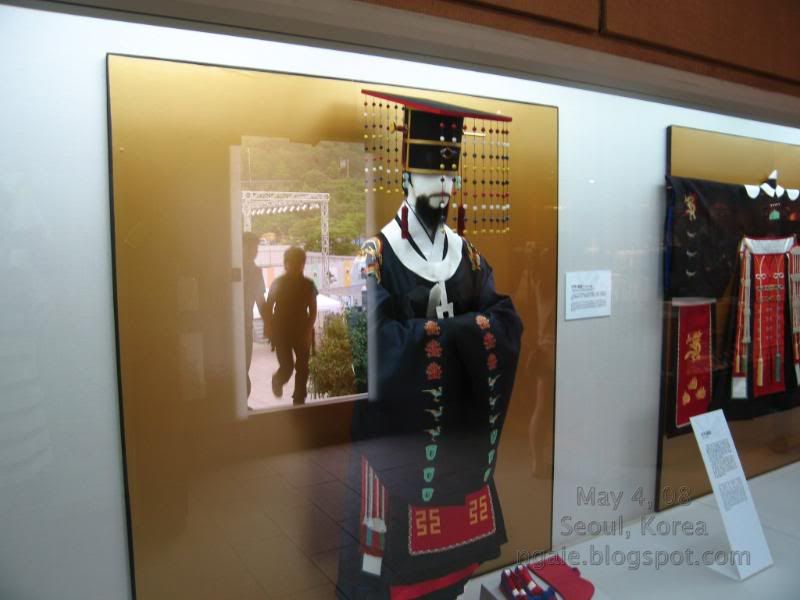

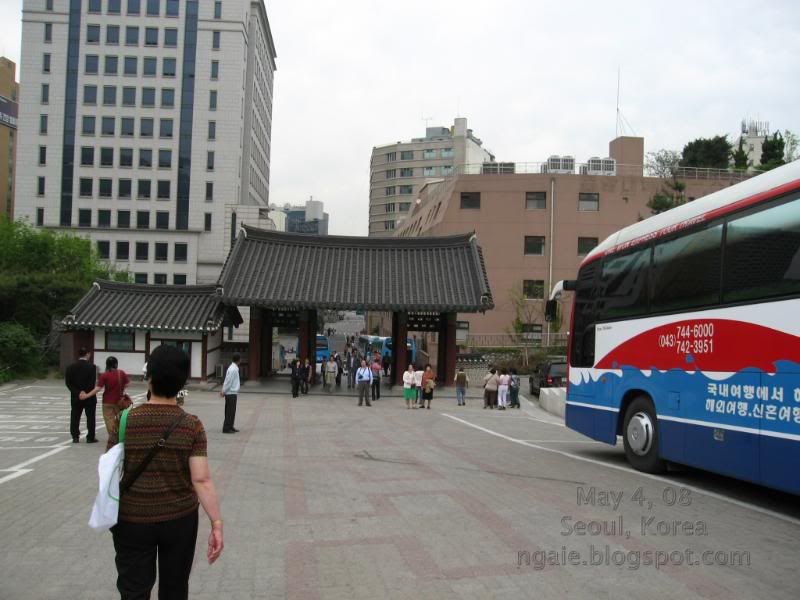
After about 30 minutes at the folk village we decided to go to the Gyeongbokgong Palace.
Instead of waiting for the Seoul City Bus, which according to the pamphlets, arrived every 30 minutes at each stop, we decided to take the subway as that would be faster.
This particular subway station was pretty funky looking, looked like some kind of "bat-cave".

The front gate of Gyeongbokgung Palace.
The palace was originally constructed in 1394 by King Taejo. Gyeongbokgung was continuously expanded during the reign of King Taejong and King Sejong the Great, but part of the palace was burnt down during the Japanese invasions of Korea (1592-1598).
During the regency of Daewon-gun in 1867, the buildings were reconstructed and formed a massive 330-building complex with 5,792 rooms. Standing on 4,414,000 square feet (410,000 square meters) of land, it was a symbol of majesty for the Korean people and the home of the royal family. In 1895, after the assassination of Empress Myeongseong by Japanese agents, her husband, Emperor Gojong left the palace and the imperial family would never return. (Courtesy of Wikipedia)
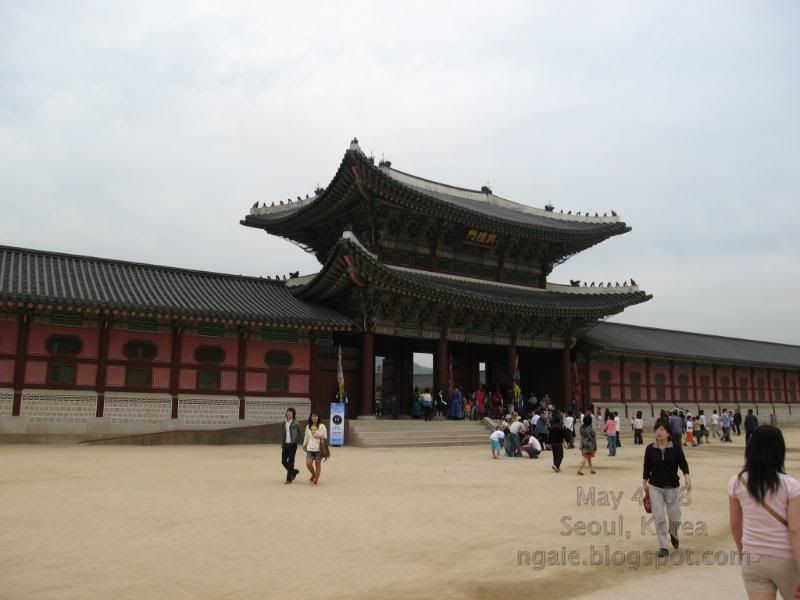
Walking around I noticed an interesting picture that was on the scaffolding that was covering the restoration of the front gate of the palace. After searching on the web after I came back, I found that this building was the Japanese General Government Building.
The following picture is from Wikipedia and circa 1995.
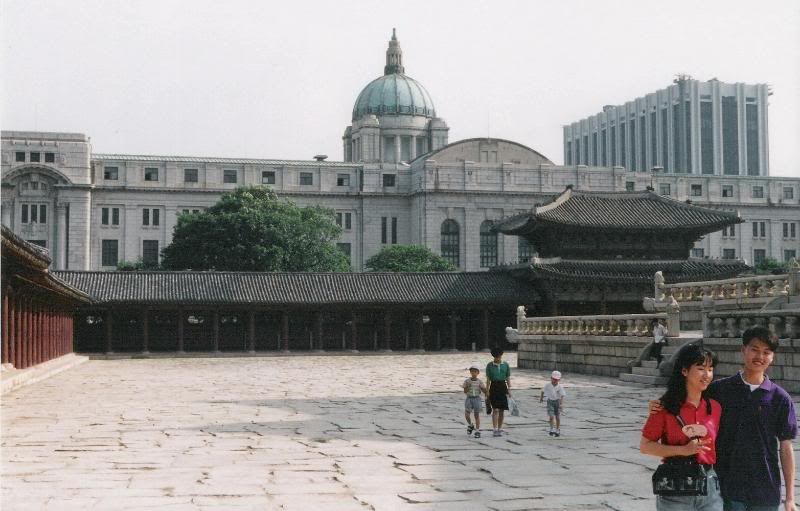
The Japanese Government-General Building (often referred to outside Korea as the Seoul Capitol) was the chief administrative building in Seoul during the Japanese occupation of Korea and the seat of the Governor-General of Korea. It was a neo-classicist building designed by German architect Georg De Lalande, and was completed in 1926. Although the building was later the scene of numerous important events for the Republic of Korea, housing first the National Assembly and later the National Museum of Korea, it was long felt to be a symbol of Japanese colonialism, and was demolished in 1995 and 1996. (Courtesy of Wikipedia)
What is interesting is that building was built right between the two gates of the palace. Since its demolition, there is a big empty space between the palace gates.

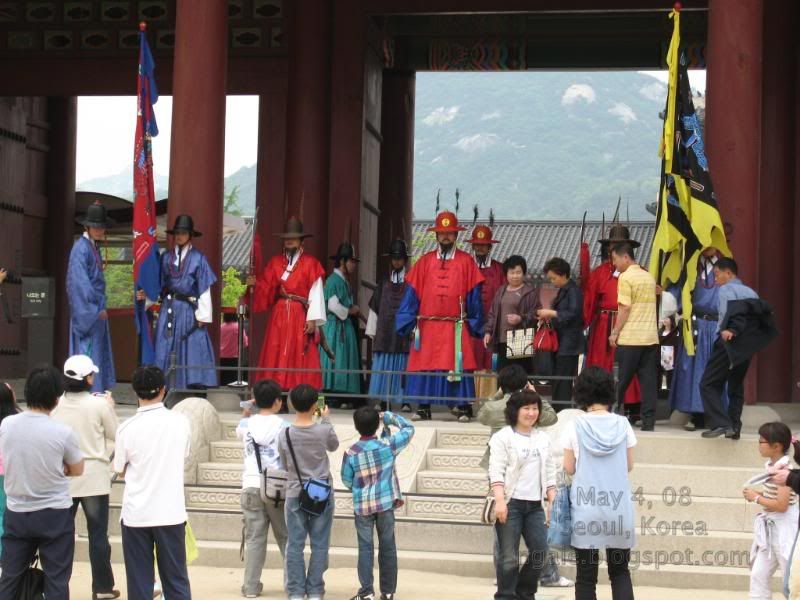
A view of central Seoul from the palace.

Inside the palace.


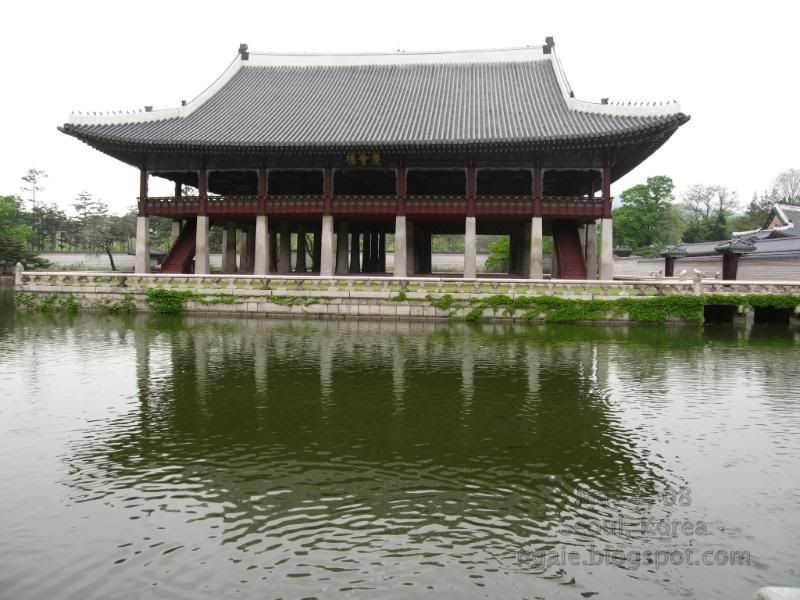
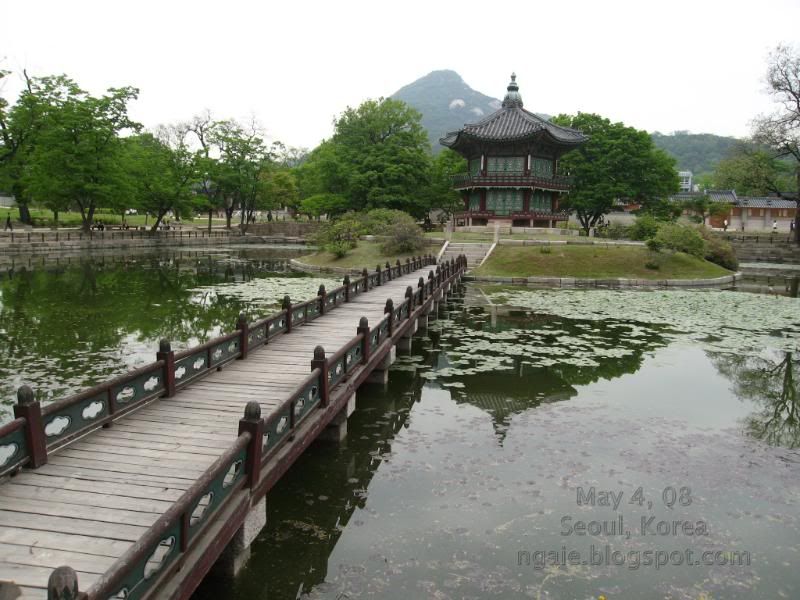
To be continued in the next post...
Seoul Day 3: Insadong, Seoul Skyline from Han River

0 comments:
Post a Comment